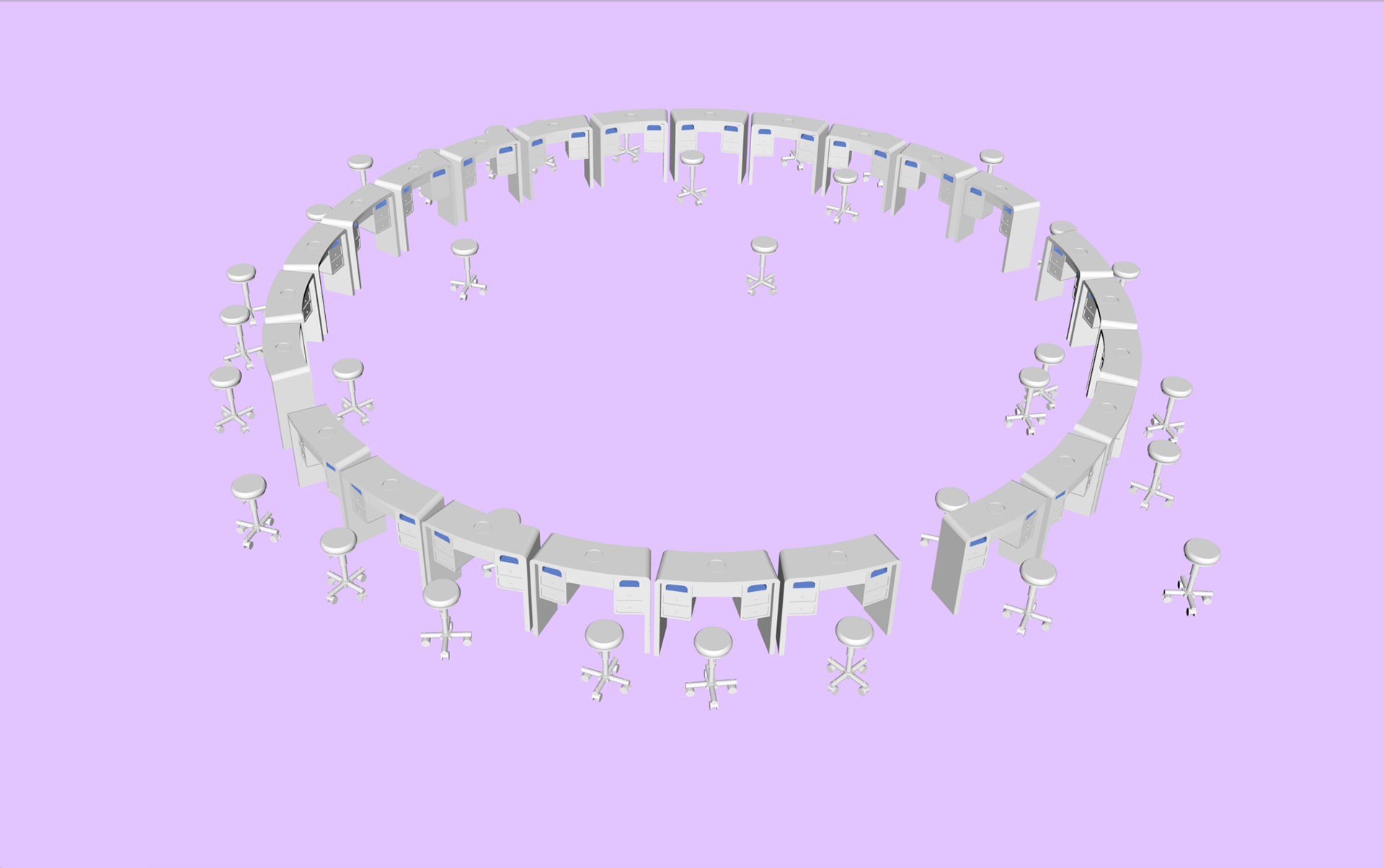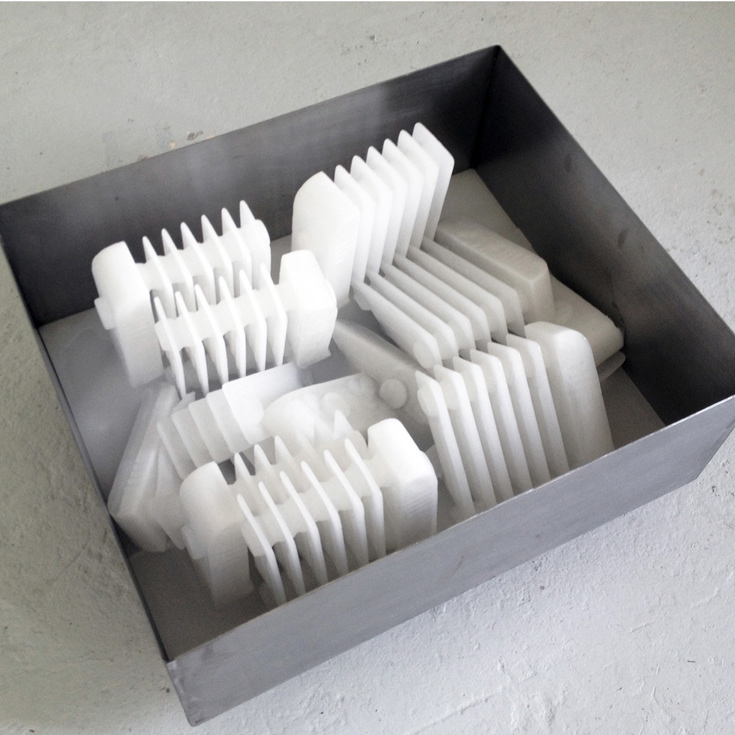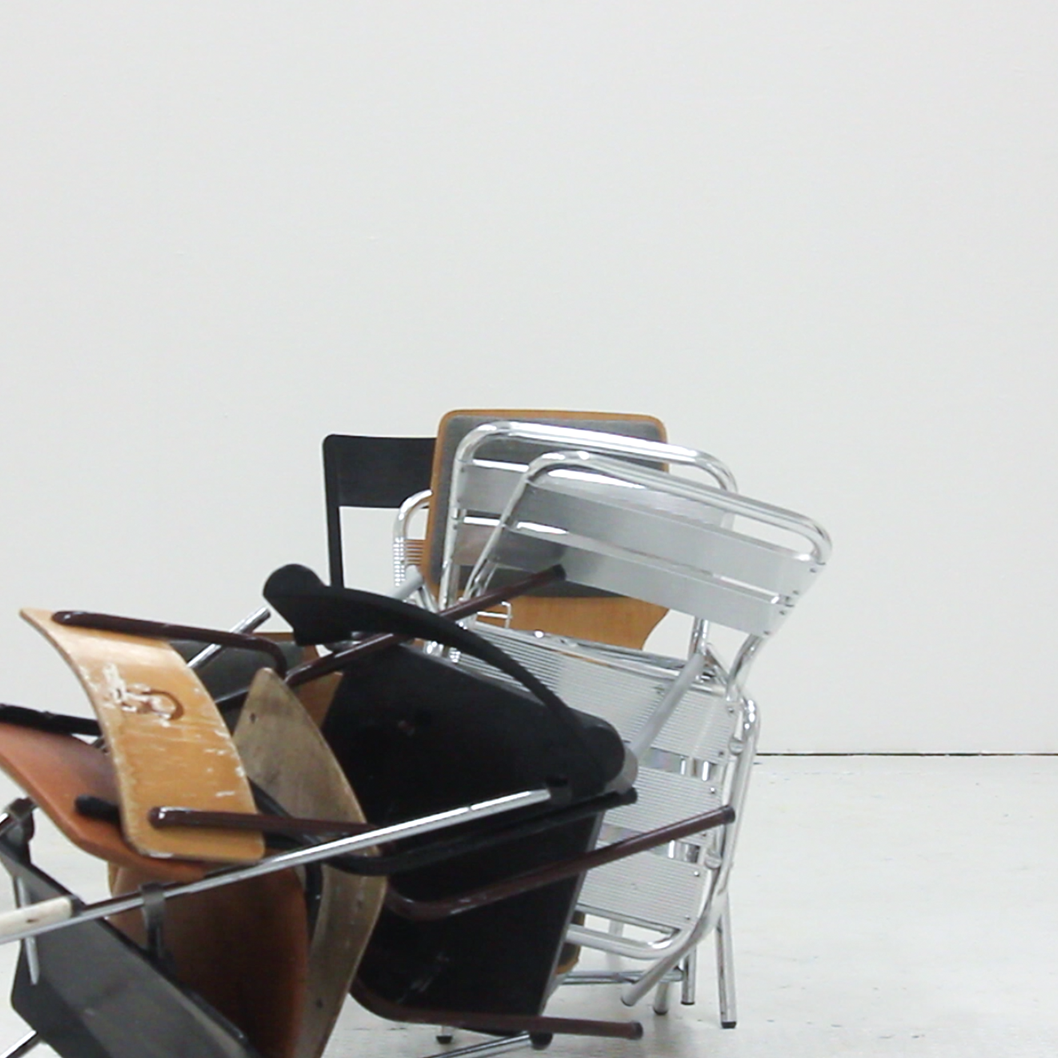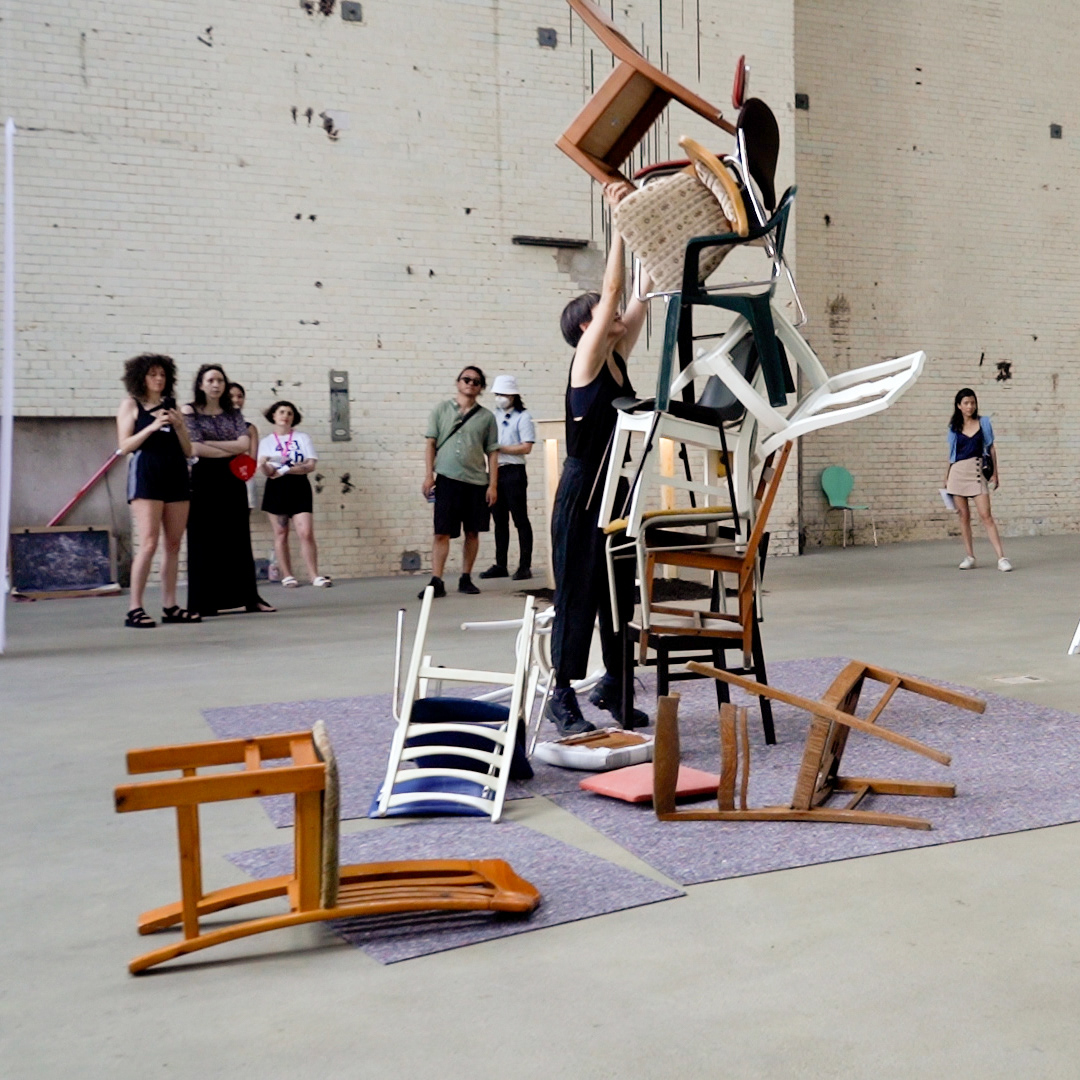Manicure Conference Modellage
2018
Zusammenarbeit mit Johanna Käthe Michel (N*A*I*L*S*hacks*facts*fictions)
3D-Modell auf Touchscreen
„Manicure Conference Modellage erweitert die Erkundung zu einer potenziell emanzipatorischen Rekonfigurierung der Beziehungen von Räumen und Körpern. Das Mobiliar des Nagelstudios wird in einen runden Tisch verwandelt, der auf die Bestuhlung des ersten Gipfeltreffens der Bewegung der Blockfreien Staaten im Jahr 1955 verweist, jener atomwaffenfeindlichen und antikolonialen diplomatischen Struktur des Kalten Kriegs, gegründet von Nationalstaaten, die sich weder mit westlichen Mächten noch mit der Sowjetunion und ihren Verbündeten identifizieren wollten. Es entsteht ein interaktives räumliches Arrangement, das eine alternative Weltordnung auf das Nagelstudio überträgt: ein Raum, in dem Kund:innen und Arbeiter:innen auf Augenhöhe über feminisierte Arbeit, Biopolitik und Solidaritätsstrukturen diskutieren können." Text: Sonja Hornung
Co-produktion mit City of Women, Goethe-Institut Ljubljana, District Berlin, Unterstützt von Lenovo Slovenia.
Manicure Conference Modellage
2018
Collaboration with Johanna Michel (N*A*I*L*S Hacks*Facts*Fictions)
3D Model display on touchscreen
Collaboration with Johanna Michel (N*A*I*L*S Hacks*Facts*Fictions)
3D Model display on touchscreen
In this work an utopian architecture is designed for a potential global nail artist conference concerning women workers solidarity and biopolitics. Having researched typical arrangements of the manicure table in nail salon, the concept of the work was developed to deal with the architectural influence of the one-way interaction relationship between customers and workers. The tables in the artwork oscillate between the classical manicure table and a conference round table which references the non-aligned summit.
"Two works by Jinran Ha & Johanna Käthe Michel unravel tensions and emancipatory potentials within a particular economy tied to feminised care-work and “migrant” working-places: that of the nail studio. Both works were developed in the context of the 2018 transdisciplinary research project and publication ‘N*A*I*L*S Hacks*Facts*Fictions’.
Manicure Conference Modellage extends this exploration into a potential emancipatory reconfiguration of relationships between spaces and bodies. The furniture of the nail studio is transformed into a round table that references the seating for the 1955 first summit of the Non-Aligned Movement, the Cold War anti-nuclear and anti-colonial diplomatic structure founded by nation-states identifying neither with Western nor Soviet-aligned powers. An interactive spatial arrangement arises that maps an alternative global order onto the nail studio: a space for clients and workers to discuss feminised labour, biopolitics, and solidarity structures eye-to-eye."
Text by Sonja Hornung
In Co-production with City of Women, Goethe-Institut Ljubljana, District Berlin, supported by Lenovo Slovenia.




Photo: Joanna Joanna Kosowska
Installationsansicht, “Corneous Stories”, 2020, Galerie Skuc, Ljublinana, SL, Photo: Nada Zgank











